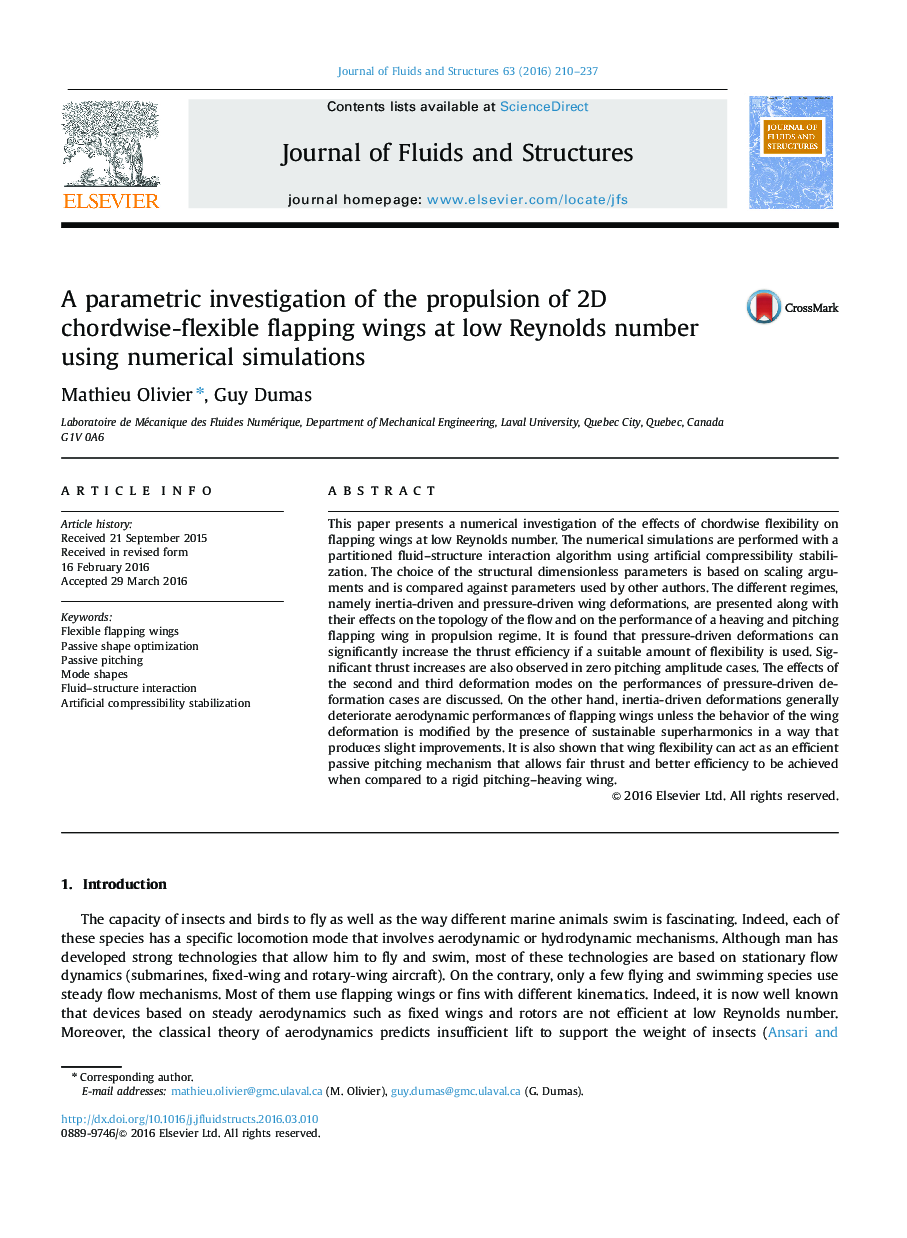| Article ID | Journal | Published Year | Pages | File Type |
|---|---|---|---|---|
| 7175914 | Journal of Fluids and Structures | 2016 | 28 Pages |
Abstract
This paper presents a numerical investigation of the effects of chordwise flexibility on flapping wings at low Reynolds number. The numerical simulations are performed with a partitioned fluid-structure interaction algorithm using artificial compressibility stabilization. The choice of the structural dimensionless parameters is based on scaling arguments and is compared against parameters used by other authors. The different regimes, namely inertia-driven and pressure-driven wing deformations, are presented along with their effects on the topology of the flow and on the performance of a heaving and pitching flapping wing in propulsion regime. It is found that pressure-driven deformations can significantly increase the thrust efficiency if a suitable amount of flexibility is used. Significant thrust increases are also observed in zero pitching amplitude cases. The effects of the second and third deformation modes on the performances of pressure-driven deformation cases are discussed. On the other hand, inertia-driven deformations generally deteriorate aerodynamic performances of flapping wings unless the behavior of the wing deformation is modified by the presence of sustainable superharmonics in a way that produces slight improvements. It is also shown that wing flexibility can act as an efficient passive pitching mechanism that allows fair thrust and better efficiency to be achieved when compared to a rigid pitching-heaving wing.
Related Topics
Physical Sciences and Engineering
Engineering
Mechanical Engineering
Authors
Mathieu Olivier, Guy Dumas,
